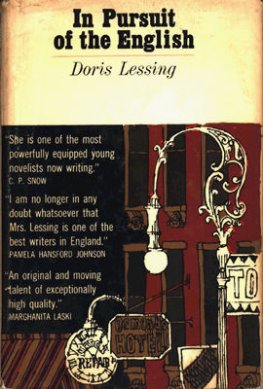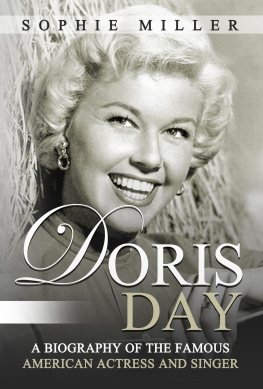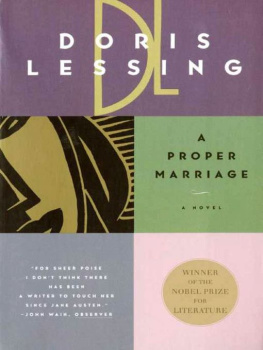2010 by Carolyn Sayler. All Rights Reserved.
No part of this book may be reproduced in any form or by any electronic or mechanical means including information storage and retrieval systems without permission in writing from the publisher, except by a reviewer who may quote brief passages in a review.
Sunstone books may be purchased for educational, business, or sales
promotional use. For information please write: Special Markets Department,
Sunstone Press, P.O. Box 2321, Santa Fe, New Mexico 875042321.
Book and Cover design

Vicki Ahl
Body typeface

Goudy OlSt BT
Printed on acid free paper
____________________________________________________________________________
Library of Congress Cataloging-in-Publication Data
Sayler, Carolyn, 1934-
Doris Fleeson : incomparably the first political journalist of her time /
by Carolyn Sayler.
p. cm.
Includes bibliographical references.
ISBN 978-0-86534-759-5 (ssoftcover : alk. paper)
1. Fleeson, Doris, 1901-1970. 2. Women journalists--United States--Biography. I. Title.
PN4874.F5S39 2010
070.92--dc22
[B]
2010007910
____________________________________________________________________________
www.sunstonepress.com
SUNSTONE PRESS / Post Office Box 2321 / Santa Fe, NM 87504-2321 /USA
(505) 988-4418 / orders only (800) 243-5644 / FAX (505) 988-1025
ACKNOWLEDGMENTS
I am grateful to members of the Fleeson familyDick, Bob, Helen and Harryfor their informative and entertaining reminiscences of their aunt. I would like to acknowledge their help and that of Doris ODonnell; of Robert Parks, archivist at the Franklin D. Roosevelt Presidential Library; Sara Halderman of the Lyndon B. Johnson Presidential Library; Ruth and Dale Evans and their friend, C. Warren Ohrvall, archivist at the Harry S. Truman Presidential Library.
Retired editor Max Moxley provided interesting details and observations, along with his own photos. I also appreciate the contributions of Thelma Pence Tichenor, U.S. District Judge Martin C. Pence, Bernadine Steierl, Helen Jacobs Crooks, Betty Calderwood, Judy Jones, John, David and Catherine Sayler, Dr. Barbara L. Watkins, Doris E. Saunders, Liz Carpenter, Helen Thomas and Mary McGrory.
INTRODUCTION
O n June 9, 1954, the Senate-Army hearings produced a dramatic confrontation as Army counsel Joseph Welch blurted to Senator Joseph McCarthy: Have you no sense of decency, sir? At long last, have you left no sense of decency?
Doris Fleeson had been following the rise of McCarthyism for three years. Her voice had been among the most prominent in defining manifestations of the brief period in history now known as an era.
Her column had contained vivid denunciations, beginning in June 1951 following the attack on General George Marshall. For one thing is perfectly certain, she wrote. If Joe McCarthy can undermine the reputation of Gen. George Marshall, Joe McCarthy can become the dictator of the United States of America.
Rhetorically, Fleeson had prodded Eisenhower to denounce the Senator. Now, following the explosive session in the summer of 1954, she wrote: That flower of evil which is McCarthyism bloomed in the Senate caucus room late Wednesday, rank and noxious, a fitting funeral blossom for the death of a republic.
Fleeson was in the most productive time of her career, syndicated in seventy newspapers and cited by Time magazine as the top news hen in Washington. Although she was a well known liberal, her following bridged political lines. Typical was a letter in response to the June 10th column:
Dear Doris,
I invariably read your articles with eager appreciation for you are the most lucid, brief, crystal clear writer in my humble opinion I know of. Today you surpassed even yourself. What you said was like a diamond writing on glass. I thank you for being so supremely articulate in so few words and for expressing what so many of us feel regarding this creature McCarthys latest and most revolting action.
The letter was signed Peggy Talbott, with a postscript: Dont please answer this, just keep on writing!
Helen Thomas, looking back over fifty years, focused on this essence of Fleesons writing. Thomas had come to Washington in the middle of World War II, and was a gofer, or copy boy on the old Washington Daily News. It was at about this time that Doris began her column. She was very careful when she wrote, Thomas observed. What struck me was that in conversations she was on her soapbox and could be very vehement. Her columns were straight, balanced, unbiased they were so intelligent and they uplifted you. She was trying to find some sort of logic in things, which I think was wonderful.
Liz Carpenter remembers Fleeson and her long-running campaign against discrimination of women journalists. She was the top reporter in town when I went there, Carpenter said. She was short, attractive, thin and full of bustle. She had been president of the Womens National Press Club and, you know, she was well established and you admired this woman who had carved her way into being significant at the Presidents press conferences and had significant bylines.
The late Mary McGrory, in a letter dated March 29, 1996, on her Washington Post letterhead, wrote, She was my idol . McGrory, in her appreciation following Doris death in 1970, referred to her as incomparably the first political journalist of her time. Ben Bradlee, in A Good Life, remembers Fleeson as one of the toughest and smartest political columnists ever.
She was, in fact, the first woman in the United States to become a nationally syndicated political columnist. She began with the Bell Syndicate in 1945, and became affiliated with United Features Syndicate in 1954. By 1958 her column was distributed to one hundred twenty newspapers reaching about eight million families.
She was said to differ from colleagues in that she was first a reporter, and certainly not a thumb-sucker. Readers looked to her for amazing behind-the-scenes contacts. To Eric Sevareid in 1958 she was the finest woman reporter of the time.
Born in 1901 in Sterling, Kansas, she was a graduate of the University of Kansas, and eager to leave Kansas for the East. She credited early police beat reporting on The New York Daily News, where she began in 1927. In 1933 the News sent Doris and her husband, John ODonnell, to open a bureau in Washington at the beginning of the Roosevelt administration. They were young and liberal; Liz Carpenter said she can imagine the ODonnells being welcome in that fabulous era.
When the ODonnells divorced in 1942, the News recalled Doris to New York. She left the News a year later to become a war correspondent in Europe for Womans Home Companion magazine.
Her column, launched after the war, quickly gathered momentum. She had a talent, Time observed, for criticizing public figures without losing them as friendsor sources. Newsweek in 1957 suggested that there was almost no Washington figure, Republican or Democrat, who has not felt the sharp edge of her typewriter.










 Vicki Ahl
Vicki Ahl

